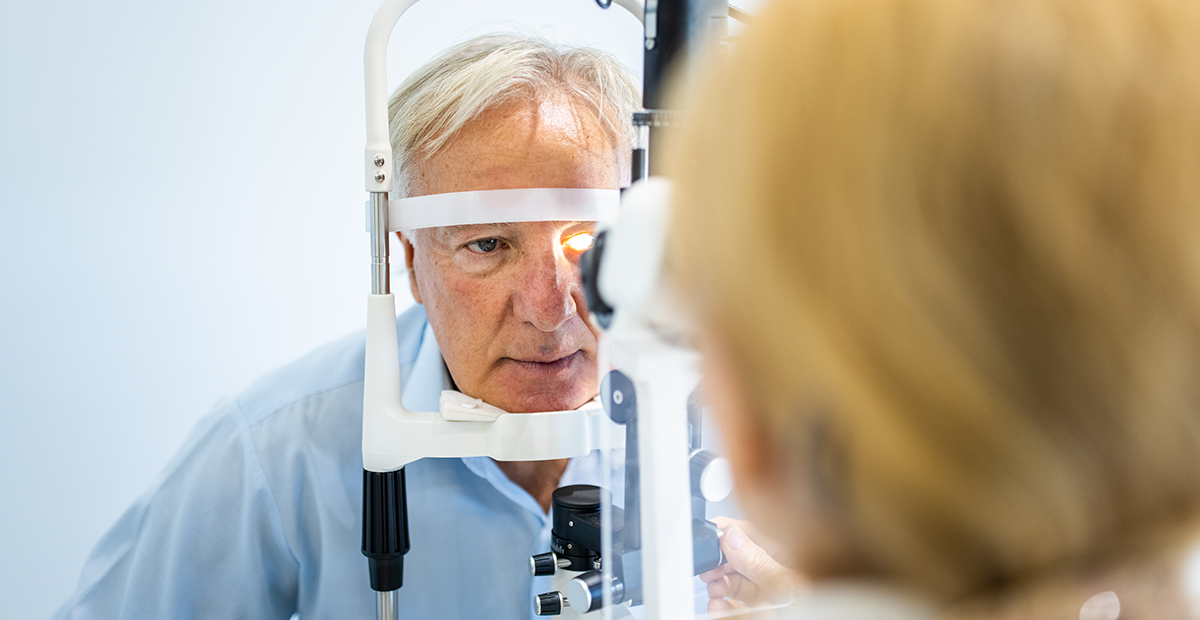Each day, tens of millions of people in the U.S. live with a cloudy, fuzzy area in their vision. For many people, these areas can be linked to cataracts – a problem that can only be taken care of by surgery.
Our eye care experts at Rochester Regional Health and St. Lawrence Health have extensive experience helping patients with cataracts and explain what cataracts are, how to know if someone needs cataract surgery, and what the surgery process is like from pre-op to recovery.
What are cataracts?
Cataracts are a cloudiness that develops on the lens inside of the eyes. Within the eye itself, the lens helps to focus light on the retina, allowing a person to see. When cataracts begin to form on the lens, it can slowly reduce how clearly a person is able to see.
Common symptoms of cataracts might include:
- gradual decrease in vision clarity
- difficulty seeing fine details (fine print, subtitles on TV)
- difficulty seeing at night
- slight color differences (whites becoming slightly yellow)
Age is the most significant contributing factor to developing cataracts. At least 50 percent of people living in the U.S. have cataracts by the time they turn 80, according to the National Eye Institute.
Other risk factors for cataracts include sustained UV exposure over someone’s lifetime, uncontrolled diabetes, and high-dose ocular or systemic steroids. In very rare cases, someone experiencing radiation or trauma close to their eyes might have an increased risk of cataracts. Very few people are born with cataracts – approximately 0.14 percent, according to researchers.
Being evaluated for cataract surgery
Unfortunately, there is no non-surgical treatment for cataracts. Ophthalmologists can update a person’s prescription for eyeglasses and continue to observe their vision until surgery is deemed necessary.
“If someone’s glasses are eventually unable to correct or improve their vision, we then begin to discuss cataract surgery,” said Kris VanWagner, DO, an ophthalmologist at the Helen Snell Cheel Medical Campus in Potsdam. “This happens once the cataracts become visually significant – meaning a reduction in visual acuity of around 20/40 vision or worse.”
Most people develop cataracts in their vision between the ages of 45 and 55, but don’t start to see their effects until decades later. Even when they start to recognize a change, it does not mean they need to have surgery immediately.
“There is a wide window of time that you can have cataract surgery,” said Desiree Albert, MD, an ophthalmologist with Rochester Regional Health Eye Care in Brighton. “It can take many years from when we first start seeing early signs of cataracts to when we actually remove them – sometimes decades. Some patients start seeing early signs of cataracts in their late 40s, and we may not need to take them out until they are in their 70s or 80s.”
Preparing for cataract surgery
When someone does decide they are ready, they will first meet with an eye doctor for a consultation. The patient will undergo an in-office evaluation to see if they are eligible for cataract surgery, then discuss a timeline if they are ready.
The surgery is then scheduled, along with a pre-operative appointment. At the pre-op appointment, the eye care team will measure the patient’s eye(s) to determine their lens power, go over pre-surgery instructions, inform them of any potential risks during surgery, and have them sign any necessary forms.
If a patient is having cataract surgery on both eyes, they will have surgery on one eye, wait two weeks for healing, then have surgery performed on the other eye.
Undergoing and recovering from cataract surgery
During the surgery itself, the surgeon removes the cloudy lens and replaces it with a new implant lens that has been specifically fitted for the patient’s eye measurements.
On the day of the procedure, the patient will be on site for 60-90 minutes. Most cataract surgeries are performed at a same-day surgery center. Patients will receive a light dose of IV sedation and have their eyes dilated before they are brought to the operating room. The procedure itself takes approximately 10-15 minutes. Afterward, a staff member will bring them out to the recovery area where they will receive post-surgery instructions and be given something to drink. The patient is then free to go.
Within 24-48 hours, most patients start to see their vision improve. The majority of patients have no side effects. Some may feel a mild scratchy sensation, but it typically subsides in a day or two. If there is any pain or severe discomfort, call your eye doctor immediately.
Eye doctors will check in with patients the day after their surgery to ensure their vision is improving, their eye pressure is normal, and any swelling or inflammation is going down. A second follow-up is conducted within weeks of the surgery to ensure everything is continuing to heal well. During this first week of recovery, patients are advised not to do any heavy lifting. Special prescription eye drops need to be taken each day and an eye shield needs to be worn while sleeping to prevent any damage to the eyes.
At the final follow-up appointment one month later, an eye doctor will check the patient’s vision and give them their final prescription for eyeglasses.
Once someone has a cataract surgery, it does not need to done again. About 25 percent of people need a laser procedure due to a haze behind the implant lens. The laser procedure takes less than 5 minutes and requires no anesthesia, according to Dr. Albert.
“Cataract surgery is a very routine operation and it’s very common,” Dr. Albert said. “It’s one of the most common surgeries performed. It is a painless procedure and most patients do not need to be put under general anesthesia to have it done.”











